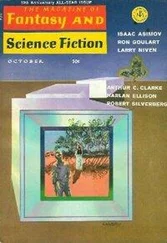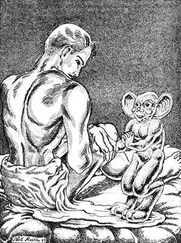I rather enjoyed killing the mice. There were surprisingly few ways to do so: drugging them took too long and was too expensive; drowning them was messy and also tedious. (And at any rate, either method would compromise key tissues we would need to study.) It was Ulliver who taught me how to kill them. What you did was hold a mouse by its tail and twirl it in a circle like a lasso until it was dizzy, its head lolling sickly from side to side. Then you’d put it on the table and with one hand hold its head behind its ears and with the other hand pull it up by its tail. A little crick! and the neck would be broken. Sometimes Julian Turnbull and I would stand at either end of the long counter that ran down the middle of the mice lab, both of us whirling four or five mice in each hand, killing them in batches. It was a satisfying task, a small but real accomplishment to mark a day that, like so many other days, seemed devoid of structure, or progress, or meaning.
Then you’d take the mice to the main lab and spread them on one of the countertops, stomach up. You’d cut out each spleen — a tiny, savory-looking thing, richly, meatily brown and the size of a slender watermelon seed — and place each in its own Petri dish with a bit of saline. You’d have next to you a springy pile of fine wire mesh, cut into one-inch-square pieces, which you’d sterilize over a flame, and then you’d rub the spleen against it into another Petri dish to obtain a single cell suspension. Spleens, of course, are soft and pulpy, like foie gras, and you had to be careful to only brush them against the mesh; anything more vigorous and you’d find the organ smeared over your fingers, sticky and dark as fudge. You might do this a few times, or until the organ had turned liquidy; then you’d pipette some of the sauce into a tube, examine it under a microscope, and record how many cells there were per milliliter.
The main point of these experiments was, as I’ve noted before, not only to prove that cancers were caused by viruses (note that I have not said whether cancers were caused by viruses; Smythe, whether through his own arrogance or because he had decided to make the terrible error of believing what a science writer — always an oxymoron — had written about him, seemed to have convinced himself that his theory was impregnable. His lab was not interested in proving or disproving him; Fitch and Brassard and the rest were interested only in the specifics of his supposition rather than in its inherent veracity) but also how to establish a cell culture. If you could prove that, say, Cancer X was caused by Virus Y, then all you’d have to do was create a vaccine, which would eradicate the cancer. (I’m simplifying, but not by much; this is really how they thought at the time, not just in medicine but in all the sciences: you make a bomb; you drop it on a troublesome people; the troublesome people are no more.)
One experiment I was made to repeat involved kidneys, whose malformations were easy to identify — easier than spleens’, for example. You’d take a mouse’s kidney (a more fibrous organ than the spleen) and snip it into bits into a test tube. Then you’d take those pieces and pass them through layers of increasingly fine screens to try, again, to reduce it to a single cell layer, which would be distinguishable by its smeary quality. After that, you’d pulverize the tissue with saline and fetal calf serum nutrient — which of course helps promote growth — before placing this in a sterile bottle with a flat surface and incubating it at 37 degrees. The cells, in suspension, would then attach to the surface of the bottle, appearing in flat, starry clusters. Once you had a thriving monolayer of cells, you’d introduce a virus, inoculating the cells. After a few days, you’d then centrifuge the whole batch and remove the supernate — the noncellular part — as your vaccine.
That was the thinking, anyway. And I have to admit, at the time this method seemed sensible, logical. Perhaps, in retrospect, a bit too sensible, a bit too logical, but it was more plausible than many of the prevailing theories of the time, although as I would learn shortly after, what is most plausible is not necessarily the most correct or worthy of the most consideration. More often it is the outlandish theory, the one that seems so improbable, that you find yourself returning to again and again, paying it an outsized share of attention largely because you find yourself intrigued by the originality of thought behind it.

I was twenty-four; I was infecting dogs. I took syringes of various viruses and injected them into dogs’ kidneys. They were very keen on organ transplantation in those days, and so soon I was doing real surgeries, albeit on dogs, and I was able to do them unsupervised, right there in the canine lab (sometimes Parton would walk in, gaze at me dolefully, as if he’d no idea who I was and it was not his right to ask, and then shuffle out without saying a word to me). I opened up the dog and tied off the artery to its kidney and stitched it closed again. A few days later, when the dog was in kidney failure — it moaned and whined; its urine was treacly and venomous in appearance and leaked out in fat, viscous, reluctant drops — I redrugged it, removed its dead kidney (now the bruised, sheeny blue of rotting meat), and tried to transplant into the dog a kidney I had infected in another dog. I sewed both dogs back up. The donor dog I had incinerated. The one that had received the transplant soon expired as well, although whether from the infected kidney or from my poor surgical skills I was never quite certain. I observed it and took notes on its decline in my notebook, and when it died, I harvested its organs of interest and preserved them for further analysis and then had its corpse incinerated too.
This is how day after day passed. I realize I sound bored recounting it now, and perhaps even a little dramatically fatalistic, but at the time it was interesting enough, both the work itself — for at times I truly did feel, as a good lab with a charismatic leader encourages its fellows to feel, that I, as much as anyone, perhaps more, was on the inevitable verge of a discovery of a small but important sort, something that might change science forever — and because I was learning from my days in the lab and the lives of those around me that it was not a life that I would choose. It is a funny thing, working for someone else in a lab: you are chosen because you are the best in your class or the most promising in your field or an interesting thinker, and you are put in a room full of others like yourself. In some of your colleagues you see your past, the student you once were, and in others you see your future, or at least a template for your future, although you yourself, you assume, will be better and brighter and more talented than they.
But what does it mean to be successful or talented in a lab? For your work there is not truly your own; you are chosen because of your mind and then asked, to varying degrees, to cease thinking for yourself and begin doing so for another. For some people this is easier than for others; they are the ones who remain. And so although you gain fraternity, you forsake your independence. But ambition is a difficult thing to quash completely, and so it is redirected — instead of working alone, you work in a room with others, but even as you do, you hope every day that you will be the one to make the key discovery, that you will be the one to find the answer, that you will present it, triumphant, to your director and that he will be generous and intellectually confident enough to give you your due credit. This is your hope, and it has motivated and kept alive men much more distinguished than I. But it is answered for only a very few of them, and they — the ones who one day are awarded their own labs, their own patented cell lines, their own papers — are the lucky ones. They are all of them patient, though; I, however, knew by the end of my first term with Smythe’s lab that I could never be that patient, nor that pliable.
Читать дальше













